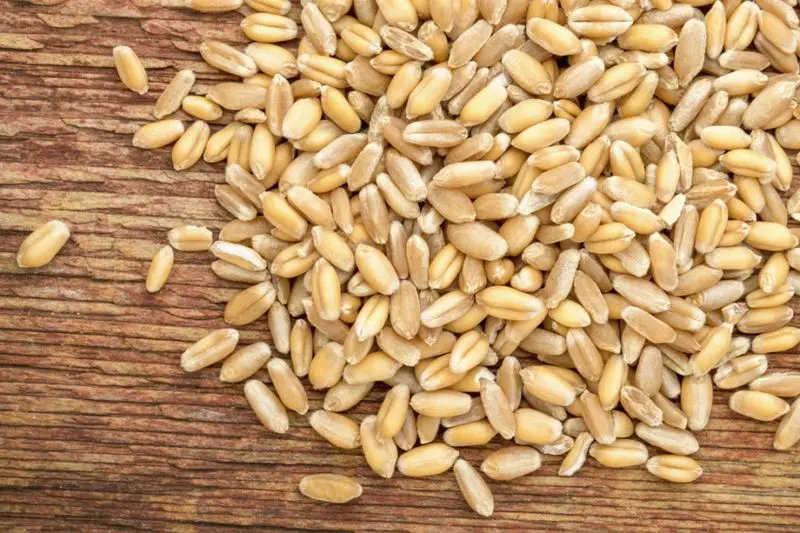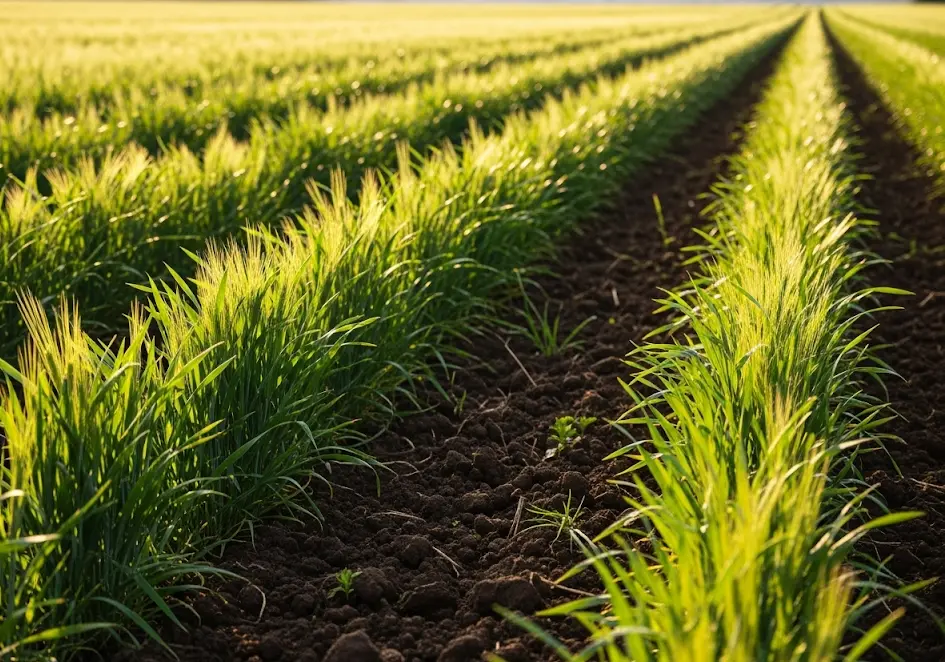New Delhi: India has protected the interests of domestic farmers by excluding dairy products, edible oils, and apples in the free trade agreement (FTA) with the UK while securing zero duties on 95 per cent of agriculture and processed food items.
No tariff concession has been allowed on oats as well in the FTA, which was signed on Thursday.
On the other hand, Indian staples like turmeric, pepper, and cardamom; processed goods like mango pulp, pickles, and pulses; and marine products such as shrimp and tuna will enjoy duty-free access in the UK market.
In agriculture, the UK imports USD 37.52 billion worth of products, but imports from India are just USD 811 million.
"India's farmers are poised to be the biggest winners of the FTA, which unlocks premium UK markets for their produce, matching or exceeding the benefits already enjoyed by exporters from Germany, the Netherlands, and other EU nations," a commerce ministry official said.


Tunisia’s recurring soft wheat tenders aren’t just a local story—they’re a bellwether for global agricultural markets. As the North African nation scrambles to secure its wheat supply against a backdrop of drought, domestic production shortfalls, and geopolitical shifts, investors are being handed a unique opportunity to capitalize on structural demand trends in global commodities.
Tunisia’s wheat imports have surged in recent years, with the 2024/25 season projecting a staggering 1.8 million
metric tons of imports to meet domestic consumption of 2.89 million metric tons. This dependency isn’t a temporary
fix—it’s a structural shift driven by three key factors:
1. Domestic Production Constraints: Tunisia’s wheat output remains stubbornly low, averaging 1.25 million metric
tons annually. Droughts and soil salinity issues in key growing regions like Kairouan and Sousse have made
self-sufficiency a distant dream.
2. Geopolitical Realignment: The EU, once a dominant supplier, has seen its market share in North Africa shrink to
25% due to poor harvests in France. Russia and Ukraine have stepped in, with Russian wheat exports to Tunisia rising
50% in 2024/25, and Ukraine rebounding with a 50% increase in shipments.
3. Infrastructure Modernization: Tunisia is investing heavily in storage and logistics, including new silos in
Rades, Sousse, and Sfax, to handle its growing import volumes. These projects, backed by $110 million in
international loans, signal long-term demand resilience.
Farmer Led Effort Promotes Soil Health and Community Values
The Global Farmer Network (GFN) announces that over 1,000 farmers from 60+ countries have signed the Regenerative Agriculture: A Farmers’ Declaration. This declaration is created by farmers, for farmers, emphasizing sustainable farming values across the globe.
The declaration is rooted in shared outcomes such as improving soil health, protecting water, boosting biodiversity, and ensuring the dignity and prosperity of rural communities. It also values science, technology, traditional knowledge, and peer-to-peer learning to strengthen agriculture.
What sets this declaration apart is its farmer-first approach. Unlike top-down policies or supply chain demands, it reflects real-world experiences and values of global farmers. It avoids strict definitions and instead promotes adaptable principles based on local conditions, crop types, and community needs.
The declaration was created over three days by eight farmers from five continents, including farmers from the U.S., India, France, Kenya, Brazil, Denmark, Argentina, and the Netherlands. These diverse leaders worked together to write a statement of shared values for regenerative agriculture.


Giving EU Member States the power to act on their own initiative against unfair trading practices in the agri-food supply chain — including in the absence of formal complaints from producers — was a key demand from the European Parliament's Agriculture Committee (AGRI) as it approved its negotiating position — authored by Democratic Party (PD) MEP Stefano Bonaccini — with 44 votes in favour, one against, and no abstentions. The position targets a crackdown on unfair cross-border commercial practices.
The European Commission put forward the proposal in December, noting that around 20% of agri-food products consumed in one EU country originate from another Member State.
The goals of the proposal are to:
- Strengthen cooperation between national authorities,
- Improve information exchange,
- Enhance investigations,
- Boost the effectiveness of sanction enforcement.
As part of a future rapid alert system between national authorities and the European Commission, MEPs propose the creation of a permanent information network.
Protections have also been extended to cover unfair practices carried out by buyers based outside the EU. Any non-EU operator wishing to trade agricultural and food products in the EU will be required to designate a “EU representative” who would be held accountable and subject to penalties in case of violations.
In the meeting, MEPs also agreed to open inter-institutional negotiations with EU countries on the final form of the legislation, following a plenary vote scheduled for September.
#IMCAP — Co-funded by the European Union.
According to the latest data from the International Grains Council (IGC), global sunflower seed production is expected to be around 56.6 million tonnes in the 2025/26 season. This represents an increase of almost 9% compared to last year. Expected higher harvests in Eastern Europe and the EU are crucial to this growth.
For Russia, which remains the largest producer, the Council expects 18.3 million tonnes of sunseed, which is around 8% more than in the 2024/25 season. The same applies to Ukraine. Here, the increase in the 2025/26 harvest will be even more significant – 14.5 million tonnes, which is 11% more. However, as the Council notes, the harvest volume of 16.5 million tonnes of the 2023/24 season is unlikely to be reached. For the EU, the IGC currently forecasts sunflower production at 9.4 million tonnes, up about 14% from 8.3 million tonnes in the previous year.
Larger harvests are also expected in Turkey and the US. According to the US Department of Agriculture (USDA), Turkey’s acreage has increased by about 40%. With average yields expected, the harvest is expected to be about 49% larger than last season, at 800,000 tonnes. However, this will not have a significant impact on global supplies.
The world’s third-largest sunseed producer is Argentina, where the harvest is expected to decline due to a reduction in planted area, by about -7% to 4.7 million tonnes.
A decrease in production is also expected in Kazakhstan.


A quiet agricultural revolution is underway, one that begins not in the soil but in space.
As the UK continues to invest in climate resilience and digital innovation, space-enabled technologies are emerging as powerful tools for land and water management. From satellites tracking soil moisture to AI-driven leak detection in water networks, the potential is vast. But potential alone isn’t enough.
THE RAPID RISE OF SPACE TECH SOLUTIONS
At a recent event focused on space tech for water and agriculture, I was struck by how rapidly space-enabled solutions are moving from concept to field-ready tools. The UK’s space economy, now valued at around £9 billion, increasingly seeks to address environmental challenges. Satellite technologies, once the preserve of defence and meteorology, are now being harnessed to monitor pollution, validate nature-based solutions, and support more sustainable land use.
Kazakhstan is currently building five large oilseed processing plants with a total capacity of 421.000 tons. This was announced by Minister of Agriculture Aidarbek Saparov during a meeting of the Economic Policy Council.
He noted a rise in prices for several socially important goods, including sunflower oil. At the same time, specific measures are being taken to address the situation: in 2024, sunflower oil production increased by 15%, which is twice the domestic demand. In the first six months of this year, production reached 388.000 tons - 21.3% more than in the same period last year.
In addition, 294.000 tons of oil were exported between January and March - a 41% increase compared to last year.
Overall, in January–May 2025, Kazakhstan’s agricultural output grew by 4% to 1.3 trillion tenge. Food production increased by 10.5%. A comprehensive plan for developing agricultural processing through 2028 has been launched, with 677 investment projects underway, including 289 focused on import-dependent goods.


PARIS, July 21 (Reuters) - A petition against a French farm bill loosening environmental rules for farming, including over the use of a pesticide accused of harming bees, has set a record for signatures, increasing pressure on the government to revisit the law.
Launched by a 23-year-old student this month, the petition poses a fresh challenge for President Emmanuel Macron, already under strain over his cost-cutting budget.
It had gathered 1.3 million signatures by Monday morning, becoming the first petition on the National Assembly website to surpass 500,000.
In France, petitions with over half a million signatures can prompt a parliamentary debate, but do not require a new vote. National Assembly chairwoman Yael Braun-Pivet and former Prime Minister Gabriel Attal are among those who have said they would back a debate.
The draft law, proposed by conservative Laurent Duplomb, would reauthorise the use of neonicotinoid pesticide acetamiprid, one of a group that European food safety agency EFSA has assessed as representing a risk to bees.
It also aims to simplify approvals for livestock breeding facilities, and to ease irrigation rules. The petition, however, calls it a "scientific, ethical, environmental, and health aberration".